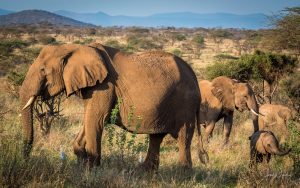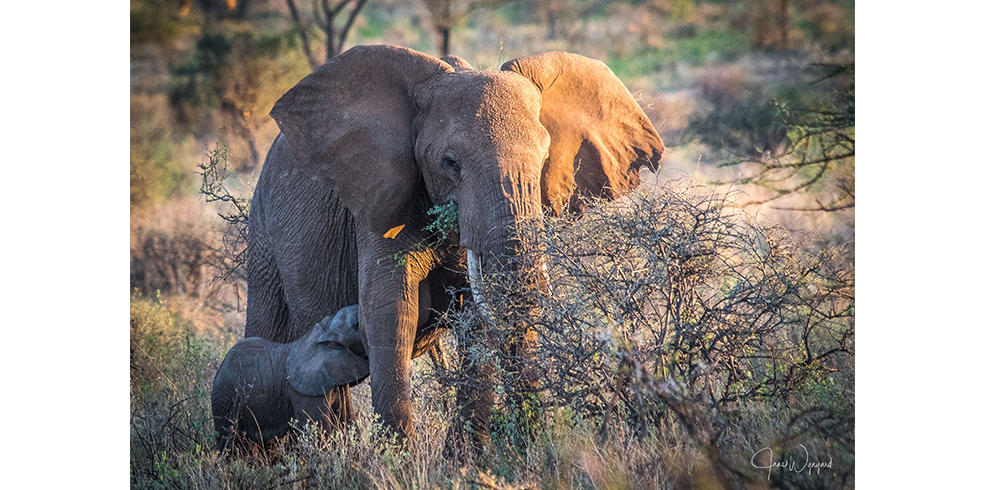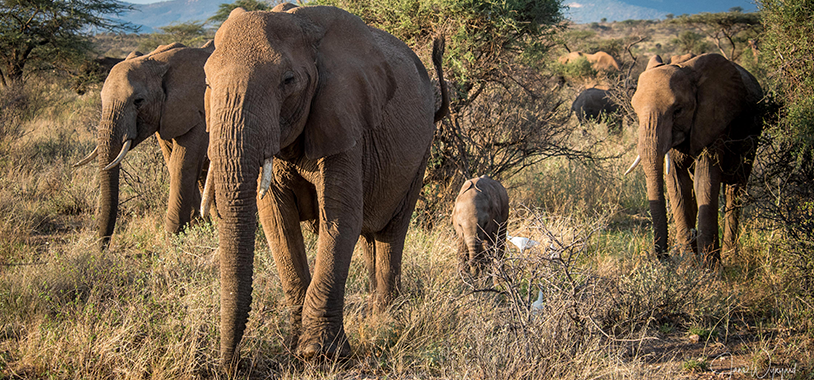A wild African female elephant who survived being shot five times by poachers and delighted scientists by giving birth again nine years later, has died in northern Kenya in the middle of the drought.
Monsoon, the fearless matriarch of the Storms family and mother of seven calves, was sadly euthanised on September 26 after she collapsed several times in northern Kenya. She was estimated to be in her sixties.

Monsoon in Samburu National Reserve
A team from Save the Elephants, who have been studying Monsoon for nearly 25 years, first found her on August 31 and called the Kenyan Wildlife Service North Kenya Veterinary Unit (supported by Grevy’s Zebra Trust, Ewaso Lions and Save the Elephants). The team gave her vitamins and helped her to her feet however days later, a similar intervention happened in Buffalo Springs Reserve.
On September 26, Save the Elephants was again alerted to Monsoon lying down. After consultations with the vet, Monsoon was euthanised to end her suffering. It’s estimated her ill health was brought on by old age and exacerbated by the drought which has ravaged parts of Kenya for the past several months.
Monsoon was an extraordinary and resilient elephant who survived the poaching crisis of 2009 – 2014 despite being shot five times by poachers and losing two calves to poachers’ bullets. In 2018, she surprised everyone at Save the Elephants by giving birth again for the first time in nine years in the safe haven of Samburu National Reserve.
Elephants don’t normally give birth when they’re stressed so Monsoon’s new calf was hailed as a sign of recovery and resilience indicating that elephants are starting to feel safe again. Since then we’ve also seen elephants expanding their range in northern Kenya into places they haven’t been seen for years – further proof that elephants are starting to rebuild their shattered lives after the poaching crisis.

Monsoon pictured with her calf who sadly died some months after birth in Samburu National Reserve, northern Kenya
Not only was Monsoon a fighter, but she’s also infamous for proving scientists wrong when she led her Storms family up Koitogor, one of the biggest hills in Samburu National Reserve in 2006. Save the Elephants had ironically just published a scientific paper – ‘Elephants Avoid Costly Mountaineering’, showing that elephants tended to avoid significantly sloped terrain, when Monsoon and her herd traversed the hill.
Elephants normally live to roughly 60 years of age in the wild. Sadly it’s often young calves and older elephants like Monsoon who succumb first during droughts like the one being experienced in Kenya at present. In the north, the drought is so severe that wild elephants are scrambling for food in a landscape that resembles a desert wasteland. Most of the grass has been eaten by hungry livestock that have invaded protected areas like Samburu National Reserve. Elephants are tearing down acacia trees to eat the thorny branches or walking brazenly into tourist camps in search of sustenance.
Save the Elephants’ founder, Iain Douglas-Hamilton says, “This is such sad news. Monsoon, our mountaineering elephant, has been a symbol of elephant ingenuity, individuality and unpredictability. I will mourn her passing. Sadly the outlook for rain later this year is grim and there are fears the drought may stretch well into 2023 which is a major worry. We are working with our partners, local communities and government in Kenya to address the long-term problems the drought will bring to wildlife and communities alike and doing our best to prevent more elephants like Monsoon from dying.”

Monsoon (front) with her family in Samburu National Reserve
Images by Jane Wynyard/Save the Elephants

